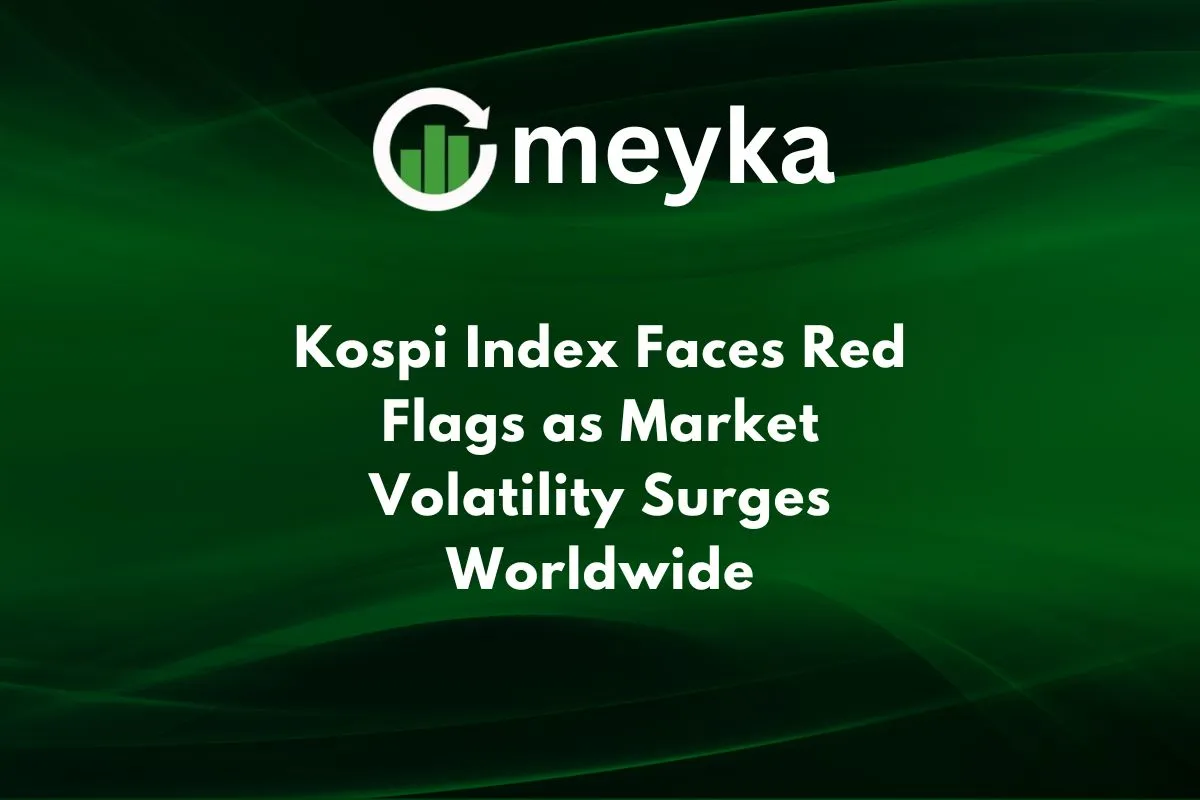Kospi Index Faces Red Flags as Market Volatility Surges Worldwide
We’ve watched the KOSPI Index soar this year for good reason. It broke above the 4,000‑point mark and grabbed global attention. Yet behind that climb lie warning lights. Rising global volatility and speculative buying are making the market more fragile than it seems. We will review how the index got here, examine the global forces at play, highlight key red flags, and look ahead to where we might be headed.
Current Performance of the KOSPI Index
The KOSPI crossed 4,000 points recently, closing at 4,221.87 on November 3, 2025. That marks a huge gain for the year. On one live data feed, the KOSPI Index was trading around 4,170.63 points, roughly a +67.92% increase over the past year. Sector‑wise, the surge has been driven by tech and exports. For instance, major Korean chip makers benefited from the global AI hardware wave. At the same time, the valuation of the market has stretched: the price‑to‑earnings (P/E) ratio now sits around 19.9×, versus a three‑year average of 17.9×.
So while the headline is strong, there are signs of overextension.
Global Market Volatility and Its Impact
Globally, risk is rising. The gauge of KOSPI’s expected swings, the volatility index VKOSPI, has spiked into the 40s, far above the usual range of 10–20. That jump reflects heightened sensitivity to global shocks.
We see three major global factors affecting the KOSPI:
- Interest‐rate and inflation worries, especially in the U.S., pushed foreign investors to pull money out of risk assets.
- Geopolitical and trade tensions, South Korea is highly export‐dependent, so any global slowdown or supply‐chain disruption ripples through.
- Tech/AI sector hype, Much of the KOSPI’s rise is tied to tech and semiconductors (think Samsung Electronics and SK Hynix), which are volatile by nature. A global reassessment of AI valuations would hit Korea hard.
In short, the KOSPI no longer moves on local fundamentals alone. It’s deeply connected to the cycle of global risk.
Red Flags in the KOSPI Index
Here are some of the warning signals we’re seeing:
- High valuation: With P/E near 20×, earnings growth hasn’t kept pace with the price run.
- Rising leverage and speculative activity: Retail investors in Korea are borrowing more to buy stocks. Credit‐loan balances recently exceeded ₩26 trillion.
- Volatility spike: As mentioned, VKOSPI surged and shows the market is twitchy.
- Weak underbelly in tech and export sectors: Tech stocks, which form a big part of the index, have seen sharp drops. For example, the index fell 2.9% in early November after tech valuation concerns.
- Li Liquidity/investment risk: When many are chasing the same theme (e.g., AI), the room for disappointment is greater. Combined with high margin loans and “fear of missing out” (FOMO) buying, the risk of a quick pull‑back grows.
These red flags don’t mean a crash is certain. But they mean we should be cautious.
Short‑Term Outlook and Risks
So where might things go from here?
Possible scenarios
- If global growth remains stable and tech demand holds up, the KOSPI could continue rising, perhaps toward 4,500 or more. Some analysts even see 7,500 by next year.
- On the flip side, if global interest rates rise further or there’s a tech correction, the KOSPI could give back significant gains. A revisit to support around 3,900–4,000 is plausible given recent drops.
Key risk triggers to watch
- A slowdown in semiconductor demand.
- A surprise rate hike or inflation shock in the U.S.
- Export volume declines or weakening global trade.
- Retail investor panic or rapid fund outflows given the high margin loan exposure.
Key catalysts
- Strong earnings from Korean tech and exporters.
- A trade deal or tariff resolution improving overseas demand.
- Policy support from Seoul, such as greater domestic equity investment or reforms boosting corporate governance.
In short, we need to balance the strong upside potential with high‐level risk.
Conclusion
The KOSPI Index has had an extraordinary year. It has risen strongly, supported by tech, expot, and global interest. But today we see warning lights: stretched valuation, heightened volatility, speculative leverage, and dependence on global themes. For us, the takeaway is clear: the market may still go up, but it is more fragile now. We must monitor global cues, tech sector developments, and investor behaviour closely. As always: stay alert, diversify, and manage risk, because a strong market doesn’t always mean smooth sailing.
FAQS
Yes, the KOSPI reflects South Korea’s overall stock market. It shows how big companies are performing and gives a clear view of economic trends, but it can be volatile too.
The KOSPI index belongs to South Korea. It tracks the performance of major companies listed on the Korea Exchange, making it a key measure of the country’s economy.
Yes, you can invest in KOSPI through ETFs or mutual funds that track the index. You can also invest via brokers that allow international stock market access.
Disclaimer:
The content shared by Meyka AI PTY LTD is solely for research and informational purposes. Meyka is not a financial advisory service, and the information provided should not be considered investment or trading advice.






